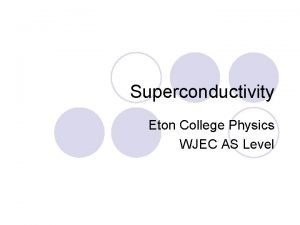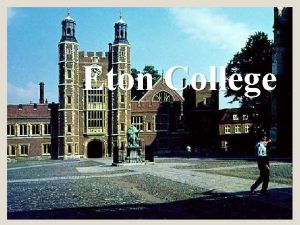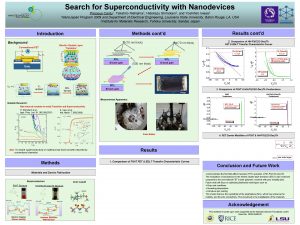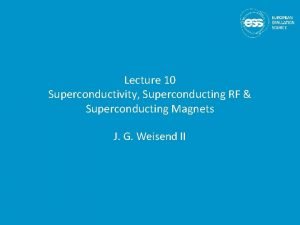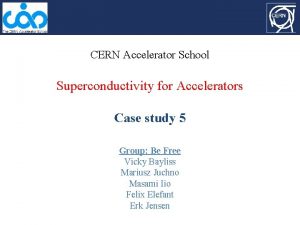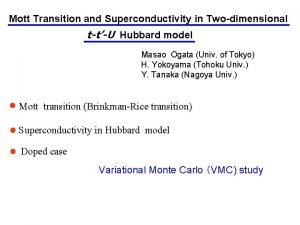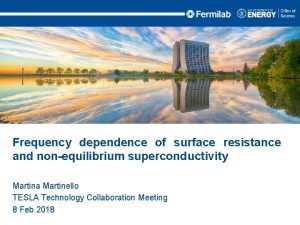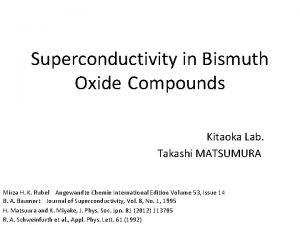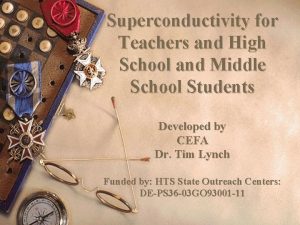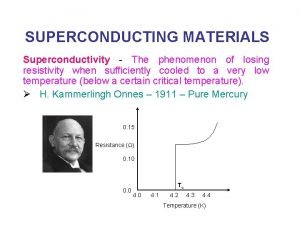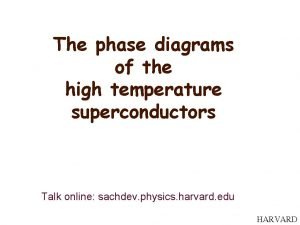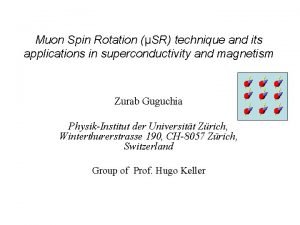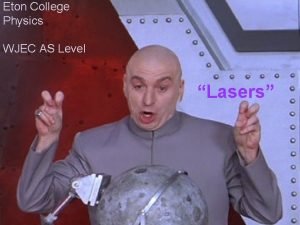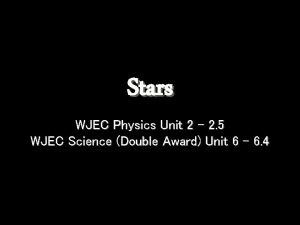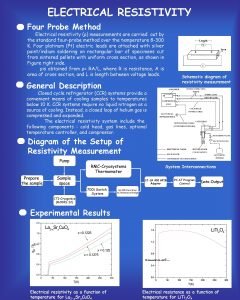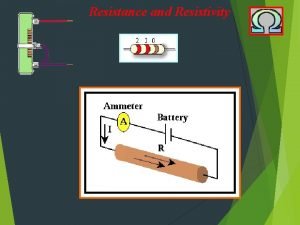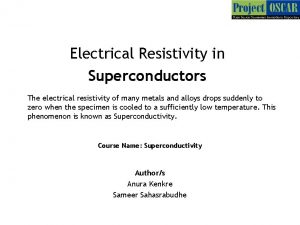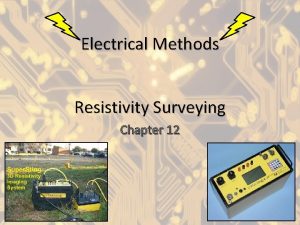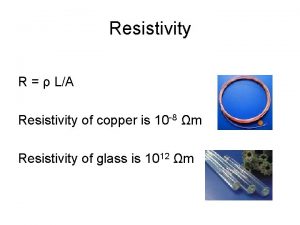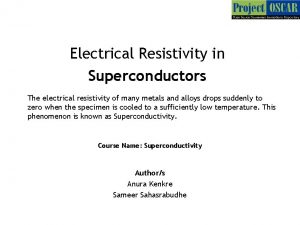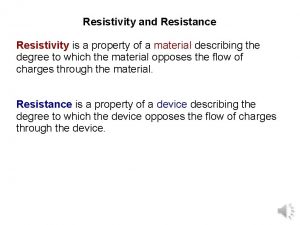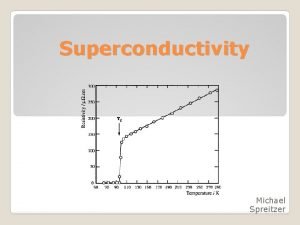Superconductivity Eton College Physics WJEC AS Level Resistivity

















- Slides: 17

Superconductivity Eton College Physics WJEC AS Level

Resistivity ρ characterises the resistive behaviour of a material. l ρ is an intrinsic quantity but is not constant. l In most metals, ρ increases linearly with temperature: l

Resistivity v Temperature resistivity / Ω m temperature / ºC

Onnes - 1911 Heike Kamerlingh Onnes was studying the resistivity of solid mercury at very low temperatures. l Mercury behaved as expected down to below 5 K. l

Resistivity of Mercury resistivity / Ω m 4. 2 temperature / K

Resistivity of Mercury l The resistivity of mercury abruptly vanishes once its temperature falls below 4. 2 K. l Below 4. 2 K, mercury is said to be in a superconducting state; l It offers zero electrical resistance to any current flowing through it.

Implications of Superconductivity l In the superconducting state, electrons pair up. l These ‘Cooper pairs’ of electrons no longer interact with the lattice ions. l Since there are no collisions between electrons and lattice ions, there is no energy transfer from the electrons to the ions. l The lattice therefore offers no resistance to current flow.

Critical Temperature l 4. 2 K is known as the superconducting transition temperature or critical temperature, TC, of mercury. l At this temperature, mercury undergoes a phase-transition from a normal conducting state to a superconducting state.

Subsequent Discoveries 1913 – lead observed in superconducting state with TC = 7 K. l 1941 – niobium nitride (Nb. N) observed in superconducting state with TC = 16 K. l Most superconductors have critical temperatures of a few kelvin. l Until the 1980 s it was thought that superconductivity was not possible above 30 K. l

‘High’ Temperature Superconductors (HTSCs) l 1986 – TC = 35 K observed (Nobel Prize for Bednorz and Müller). l Shortly afterwards ‘YBCO’ was observed with TC = 92 K. l This is significant as nitrogen condenses at 77 K, enabling liquid-nitrogen cooling. l TC > 77 K is known as high temperature superconductivity.

Modern HTSCs l 2006 - Hg 12 Tl 3 Ba 30 Cu 45 O 125 has TC = 138 K; possibly > 160 K under pressure. l In recent months, claims of TC ≈ 200 K for some crystals have been made.

Uses of Superconductors l Superconductors enable very high currents to be sustained in circuits. l They are therefore very useful in the construction of extremely powerful electromagnets. l Superconducting electromagnets have many applications.

Particle Accelerators Superconducting steering magnets are used to deflect charged particles. l For example: the new LHC at CERN. l

MRI Scanners Intense magnetic fields are required to produce images in MRI scanners. l This is one of the most sophisticated diagnostic tools in modern medicine. l

Tokamaks A tokamak is a containment device for the storage of high-temperature plasma. l Such devices may ultimately make sustained, controlled nuclear fusion possible. l

The Future… It is hoped that future applications of superconducting materials will include: l Motors, l Generators, l Transformers, l Power storage devices, l Power transmission devices, l Magnetic levitation devices.

Related Physics… l Superconductivity is an example of lowtemperature bosonic behaviour. l Paired electrons are classified as bosons; alone they belong to a class known as fermions. l Other examples include superfluidity of helium-4 (henlium-3 atoms are fermions) and Bose-Einstein condensation.
 Superconductivity a level physics
Superconductivity a level physics Floreat etona meaning
Floreat etona meaning Eton college
Eton college Eton college collections
Eton college collections Eton college endowment
Eton college endowment Superconductivity
Superconductivity Pining
Pining Superconductivity
Superconductivity Superconductivity
Superconductivity Hubbard
Hubbard Superconductivity
Superconductivity Superconductivity
Superconductivity Superconductivity introduction
Superconductivity introduction Superconductivity
Superconductivity Superconductivity
Superconductivity Superconductivity
Superconductivity Eduqas a level music resources
Eduqas a level music resources Wjec eduqas english literature a level
Wjec eduqas english literature a level
